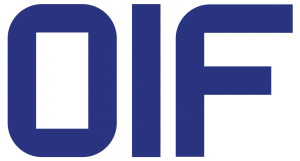It’s Getting Hot In Here!
In an effort to help optical module suppliers and system designers reduce heat and thermal management issues, the Optical Internetworking Forum (OIF) has approved a thermal interface implementation agreement (IA) for pluggable optics modules. The agreement summarizes the information to be provided by module suppliers to facilitate thermal integration of
the module within the host system. It also defines the requirements and methods for testing a thermal interface between a pluggable optical module and the hostsystem heatsink.
“When optical modules are mated with heatsinks, the goal is to remove over 90% of
the heat through the interface area into the airflow stream via the heatsink,” said
Torsten Wuth, of Coriant and the OIF Physical Layer User Group Working Group chair.
“Nominal ranges of heat flux are defined as Power Density classes. The OIF
agreement defines acceptable thermal impedances for the contact area for various
pluggable module types and a method of measuring the impedance.”
The OIF previously addressed various methods that could be employed by system
designers to reduce the temperatures of modules in air-cooled systems in the
Thermal Management at the Faceplate white paper. Those methods included the
direction of airflow over the modules, internal system baffling to direct airflow,
placement of the modules and other heat dissipating devices on the blade,
optimizing fin layout on the heatsink, and increasing the thermal conductivity of the
heatsink, as well as the importance of thermal contact resistance between the
module and the heatsink.
The new IA specifies generic interface properties but includes specific examples
such as, CFP, CFP2, CFP4, XFP, SFP, SFP+, QSFP, QSFP+, and CDFP. Of primary
concern are interfaces where the pluggable module slides through the faceplate and
under a spring-loaded heat sink. This type of interface has limited contact force
because the insertion and extraction force and force from the heatsink on the
connectors are limited.
For more information go to http://www.oiforum.com/documents/implementationagreements/
About the OIF
The OIF facilitates the development and deployment of interoperable networking
solutions and services. Members collaborate to drive Implementation Agreements
(IAs) and interoperability demonstrations to accelerate and maximize market
adoption of advanced internetworking technologies. OIF work applies to optical and
electrical interconnects, optical component and network processing technologies,
and to network control and operations including software defined networks and
network function virtualization. The OIF actively supports and extends the work of
national and international standards bodies. Launched in 1998, the OIF is the only
industry group uniting representatives from across the spectrum of networking,
including many of the world’s leading service providers, system vendors,
component manufacturers, software and testing vendors. Information on the OIF
can be found at http://www.oiforum.com.

